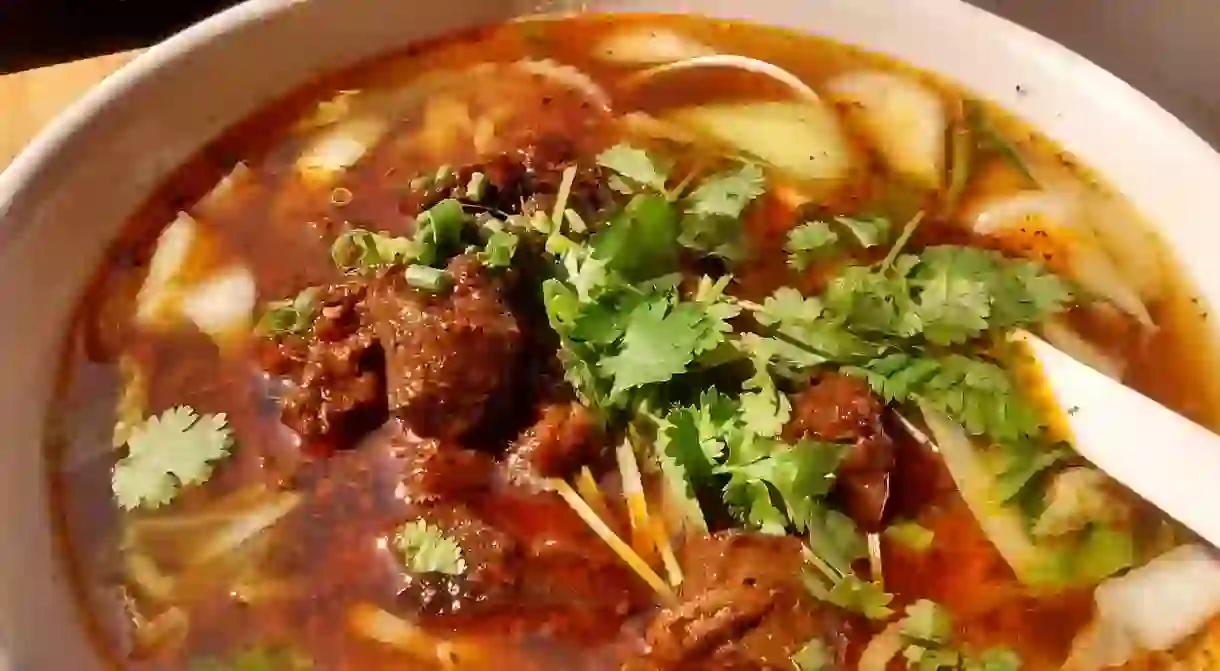A Guide to Chinese Noodles: La Mian

La mian is much more than a noodle dish: it’s a culture, a tradition, and an experience all wrapped up into one little bowl.
La mian, which means “pulled noodles,” is one of the most popular dishes across China. The dish originates in the western Chinese city of Lanzhou, once a major stop along the Silk Road. Thanks to the city’s positioning, it has a large Muslim population and influence, and with it, endless options for halal food.
“Halal” is a word found in the Quran, referring to things that are permitted under Islamic law. The opposite of halal is “haram,” which in a culinary context covers foods like pork and drinks containing alcohol. But halal regulations go beyond avoiding pork. In fact, all meat slaughtered for Muslim consumption must be killed in a humane way and be blessed in the name of God.
Essentially, anyone eating halal can be guaranteed safe, high-quality, well-cut meat, something that more and more consumers are looking for in China.

So where does la mian come in? La mian is not just the hand-pulled noodles suggested by the name, it is also the soup and meat that together with the noodles make up the whole dish. Because the dish originates in Lanzhou, it is always made halal, and sometimes even sold in shops under the name “halal beef noodle.”
The dish is simple, cheap (usually less than RMB10(US$1.25) per bowl), and widely available. Though China as a whole has not been quick to embrace its Islamic roots, no one seems to mind the proliferation of Muslim-owned restaurants in Chinese cities, especially if that means more la mian for all. Hole-in-the-wall la mian restaurants are so popular, in fact, that would-be business owners have to open their restaurant at least 400 meters from the next halal beef noodle shop, lest they be blackballed by their competitors and customers, in accordance with the Shaanxi-Ningxia-Gansu Treaty.
The Shaanxi-Ningxia-Gansu Treaty is a somewhat unofficial social pact that governs Hui Muslim restaurateurs. It originally stated that a Hui village could only have one noodle shop at a time. However, when many Hui people moved east from their original homes in the eponymous provinces of the pact, the pact moved with them. Maintaining their halal customs when they migrated was important to them and essential for their survival as a minority, and thus was born the ubiquity of Lanzhou la mian restaurants, not just within Lanzhou, but in all cities to which the Hui people have moved.

With its ever-increasing popularity, the dish has taken on new life. Today, it’s possible to get la mian with any number of toppings, from lamb to beef, scrambled egg to peppers. Customers also have the choice to forego the traditional soup in favor of a gaijiao-style la mian, meaning dry and stir-fried.
It’s also common to add a healthy dose of spice to the soup, typically through the addition of lajiaojiang, or pepper paste. The paste comes standard at all la mian shops, along with a salt shaker of MSG.

The enthusiastic reception of la mian is understandable, especially after you’ve tried it in the right context. There’s just something magical about walking around the corner to be welcomed by the flickering of a neon sign boasting halal dishes, sitting down on a rickety metal stool, hearing your order shouted to the kitchen, watching the artful way the dough is slapped on the work table and pulled apart over and over until noodles are formed, slurping the soup into your mouth, and walking out having spent less than US$2 for a full meal.














